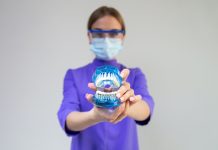Overview & Description
Artificial insemination, or AI, is a procedure that is used to help aninfertile woman become pregnant. Infertility is a disorder in which a woman isunable to become pregnant through sexual intercourse. In AI, sperm from a manis injected into a woman’s cervix, uterus, fallopian tube, or ovarian follicle.
Who is a candidate for the procedure?
Artificial insemination is recommended when a woman has been unable to conceivefor more than a year. Artificial insemination may be used if:
To be a candidate for this procedure, a woman must have fallopian tubes thatare in good condition. They must also be working properly. The tubes should befree of any disease and should not be blocked.
How is the procedure performed?
There are several steps in AI before, during, and after the actual procedure.Before the AI procedure, a fertility medicine may be used to stimulate theproduction and maturation of the eggs. This also helps prepare the reproductivesystem for fertilization. The fertility medicines are often taken for about 7days before the woman normally ovulates.
The woman will be monitored carefully while she is taking fertility medicines.This includes ultrasound scans and blood tests to check her hormone levels.Fertility medicines also increase the chance of having a multiple pregnancy,that is, twins, triplets, or more. This means the pregnancy is a higherriskpregnancy.
The healthcare provider will help the woman find out when she ovulates. A womancan do this by checking her body temperature every day and noting any vaginaldischarge. Ultrasound can also help determine when a woman is ovulating.
The location used for sperm injection depends on thecause of the infertility. There are several types of AI, such as:
The AI procedure is done in a healthcare provider’s office or clinic severaldays before the woman begins to ovulate. Sperm from the woman’s partner orsperm from a donor is used. The sperm is collected on the day of the procedure.Depending on the type of AI being done, the sperm may undergo a specialso-called washing. This prepares it to be placed into the body. This also makesit more concentrated for fertilization.
A woman is positioned as for a pelvic exam, with her feet up. A speculumwill be inserted into the vagina, as in a pelvic exam. Next, the sperm will bedrawn into a plastic syringe. A catheter, or thin tube, is attached to thesyringe and is moved into the appropriate location. The sperm is then injectedinto the cervix, uterus, fallopian tube, or ovarian follicle. This procedure isusually painless. The entire process may take from 45 minutes to a few hours.
Preparation & Expectations
What happens right after the procedure?
Usually the provider will have the woman lie still for about 30 to 45 minuteswith her legs elevated. Often a cervical cap will be put over the cervix tohold the sperm in place for several hours. The cap is removed later that day.Next, the woman can usually go home and resume normal activities. Pregnancytesting will be done. If conception has taken place, the pregnancywill be monitored closely.
Home Care and Complications
What are the potential complications after the procedure?
A possible complication of AI is a risk of having a multiple pregnancy. Amultiple pregnancy may increase the risk of miscarriage or low-birth-weightbabies. When too high a dose of fertility medicine is used, the ovaries canbecome overstimulated and cause abdominal pain. Any new or worsening symptoms should be reported tothe healthcare provider.
Article type: xmedgeneral














































